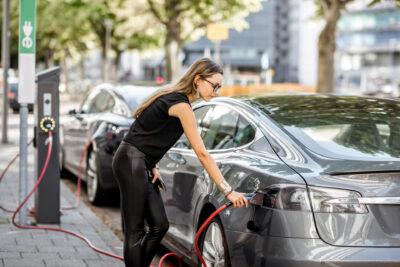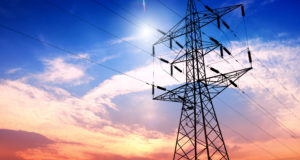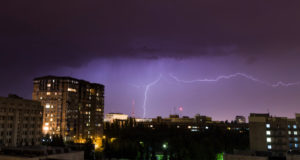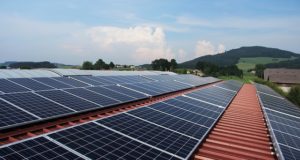|
Listen To The Article
|

Electric cars seem to be a trend whose time is coming inevitably. Now there are over half a million of them in the U.S. alone.
I remember first hearing about electric cars when I was a kid. That was a long time ago; back when they were just a theory, one that people were calling “impractical.” The few electric cars which were on the road were experimental models. They were nowhere near as efficient as the production models we have on the road today. Now there are over half a million of them just here in the United States alone.
Electric cars seem to be a trend whose time is coming inevitably. Left-leaning politicians and environmentalists have joined together, pushing for electric cars to replace gas burners. It’s all a part of the “green energy” solution they foresee in their utopian dreams.
Are Electric Cars Truly Green?
But will electric cars truly help to bring about a pollution-free world as these people claim? Sadly, no. Those who push electric cars as not polluting forget that producing the electricity that they run on creates pollution. They apparently think that just because the cars don’t have an exhaust pipe, they don’t pollute. The pollution is the fault of the electric company, not the fault of the electric car.
Moreover, they will make that point emphatically when talking about the need to switch over to green energy, specifically solar and wind power. Meanwhile, they will blame the power companies for blocking that possibility and sticking with dirty coal.
Wind And Solar Power Can’t Support The Entire Grid By Themselves
As with many such arguments on the left, this one doesn’t wash. There are three primary reasons why we can’t make a switch to wind and solar power. The first is that these systems are notoriously unreliable in certain situations. Solar power only works on sunlit days and wind only works when there is enough wind to turn the wind turbine. Neither of them produces power all the time. Furthermore, when they produce power is totally outside of the power company’s control.
This ties in directly to the second problem with these green energy sources. They do not have an efficient way of storing the energy they produce during peak times so that people can use the power when they need it. While there are many bright people working on this problem, there isn’t a viable solution just yet.
This means that other power plants need to be online and serving in a backup capacity. Then, they can provide power whenever the wind and solar power fall short. Most often, these are old, coal-fired power plants which are on their way to being decommissioned due to their age. It’s literally the least green solution we have available to us.
Costly Green Energy Backed Up By Coal-Fired Power Plants?
In other words, coal-fired power plants are backing up every wind and solar farm out there. The coal plants are kept running to provide power whenever the wind and solar alternatives can’t. That makes the net reduction in pollution caused by those “green” power plants… absolutely zero.
Finally, we have the third reason why it is impractical to switch over to green energy: cost. It would cost an estimated 20 trillion dollars to make that switch. That’s more than our country’s annual GNP. The money just doesn’t exist to invest in that major of a change.
Environmentalists love to point to countries like Iceland, Nepal, and Paraguay, whose total power production is “green.” Nonetheless, what they fail to mention is that just about all the energy production in those countries is from hydroelectric power plants, and not from wind and solar. So, their argument is invalid. Oh, and the United States tops the world in hydroelectric power, but we can’t produce all our power that way.
Back To Our Original Question
If we leave pollution totally out of the question, nothing really makes any sense on this issue. Further, if the whole idea of electric cars is to reduce pollution, can our existing grid support a switch to electric cars?
The basic answer to this is a resounding no. While electricity usage has been flat over the last few years, it is expected to rise considerably in the future. More and more systems throughout the country are being electrified, thereby generating more demand for electricity. Electric cars will merely add to this problem and strain a system that is already running at near capacity.
The Electric Cars Trend Isn’t Slowing Down
Even so, the National Renewable Energy Laboratory estimates that electric vehicles could account for as much as 76 percent of total vehicle traffic by 2050. This massive growth in electric vehicles would cause a need for a 38 percent increase in the ability of the U.S. electric power industry to produce electricity. That’s without any other considerations.
This trend is happening at the same time that those on the political left are pushing for a shutdown of coal power. While President Trump and Congress have managed to reverse many of the more draconian measures that the EPA undertook during former President Obama’s tenure, in many ways, it was too late. Electric power companies had already made plans to scrap their coal power plants and had begun the process of switching over to more efficient and environmentally friendly natural gas.
Is Natural Gas An Adequate Solution For The Power Grid?
This isn’t the answer that leftists want, but it’s a better business decision for the power companies. It’s especially true when compared to solar power, which is the most expensive means of producing electricity currently available to us. Nevertheless, there are problems with natural gas as well. While the U.S. natural gas reserves are enough to keep us in power for decades, that gas has to be transmitted to the power plants through pipes and government red tape. Additionally, environmental activism makes building those pipelines even more challenging.
Knowing that a Democrat win in 2020 or even 2024 would energize the EPA to put those measures back in place, power companies can’t see a reason to invest in new, coal-fired power plants. These plants probably wouldn’t meet the new requirements anyways.
Coal power and nuclear power have been the backbone of U.S. electrical power production for many years. In fact, they produce 50 percent of our energy needs between them. By comparison, wind and solar energy together currently provide a mere 7.6 percent. Also, the investment per kWh (kilowatt hour) to build these facilities is higher than that of the facilities they are supposed to replace.
Conclusion
Our society has to overcome these numerous problems before the switch to electric cars can occur. I have no more doubt that they will than I do that the trend towards electric cars will continue. But I am sure it will be a rocky road for our country to navigate, with many political battles along the way.
You may also enjoy reading an additional Off The Grid News article: World Adopting Unproven Renewable Energy Sources
Or download our free 28-page report on the top 9 threats to the power grid: Black Out
Do you think that the U.S. power grid can support the demand for electric cars? Let us know in the comments below.
 Off The Grid News Better Ideas For Off The Grid Living
Off The Grid News Better Ideas For Off The Grid Living



